Luna E-1 #1
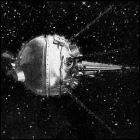 Less than a year after launching the first Earth-orbiting artificial satellite, the Soviet Union makes its first attempt to launch an unmanned space vehicle toward the moon. The flight of Luna E-1 #1 lasts a mere 92 seconds before its launch vehicle explodes in mid-air. Further attempts will be made by Sergei Korolev’s team of engineers to launch a lunar spacecraft, giving the escalating international space race a new (if somewhat obvious) target for both unmanned and crewed space flights over the next decade.
Less than a year after launching the first Earth-orbiting artificial satellite, the Soviet Union makes its first attempt to launch an unmanned space vehicle toward the moon. The flight of Luna E-1 #1 lasts a mere 92 seconds before its launch vehicle explodes in mid-air. Further attempts will be made by Sergei Korolev’s team of engineers to launch a lunar spacecraft, giving the escalating international space race a new (if somewhat obvious) target for both unmanned and crewed space flights over the next decade.

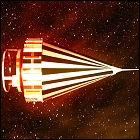 NASA’s Pioneer 4 space probe is launched toward the moon atop a Juno II booster. For the first time in the Pioneer program, the target is reached, with Pioneer 4 passing the moon at a distance of 37,000 miles. The television camera designed to activate just in time to catch the first glimpse of the lunar far side fails to deploy, thanks to a light sensor that isn’t tripped by the light reflected from the moon. Measurements of radiation near the moon are taken and transmitted back to Earth before Pioneer 4 slides into an orbit around the sun.
NASA’s Pioneer 4 space probe is launched toward the moon atop a Juno II booster. For the first time in the Pioneer program, the target is reached, with Pioneer 4 passing the moon at a distance of 37,000 miles. The television camera designed to activate just in time to catch the first glimpse of the lunar far side fails to deploy, thanks to a light sensor that isn’t tripped by the light reflected from the moon. Measurements of radiation near the moon are taken and transmitted back to Earth before Pioneer 4 slides into an orbit around the sun.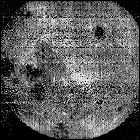 The Soviet Union’s Luna 3 unmanned probe is launched toward the moon, where it transmits the first images of the moon’s far side back to Earth – a sight that has never been seen by humans before since the moon’s near side is tidally locked toward Earth. Luna 3’s closest pass to moon brings it to within 4,000 miles of the lunar surface, and despite low signal strength and data errors during transmission, nearly 20 images of the moon’s far side are sent back to Soviet scientists via a process not unlike sending a fax.
The Soviet Union’s Luna 3 unmanned probe is launched toward the moon, where it transmits the first images of the moon’s far side back to Earth – a sight that has never been seen by humans before since the moon’s near side is tidally locked toward Earth. Luna 3’s closest pass to moon brings it to within 4,000 miles of the lunar surface, and despite low signal strength and data errors during transmission, nearly 20 images of the moon’s far side are sent back to Soviet scientists via a process not unlike sending a fax.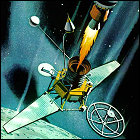 NASA and the Jet Propulsion Laboratory at Caltech begin developing a set of guidelines for what is projected to be a series of five lunar missions, involving vehicles that will photograph the moon from approach to impact, transmitting the images back to Earth live. These guidelines are the beginning of the Ranger program, though technical difficulties will eventually result in nearly twice the number of Ranger unmanned vehicles than originally anticipated.
NASA and the Jet Propulsion Laboratory at Caltech begin developing a set of guidelines for what is projected to be a series of five lunar missions, involving vehicles that will photograph the moon from approach to impact, transmitting the images back to Earth live. These guidelines are the beginning of the Ranger program, though technical difficulties will eventually result in nearly twice the number of Ranger unmanned vehicles than originally anticipated.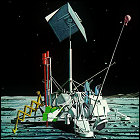 NASA begins soliciting studies from contractors for an unmanned robotic spacecraft to land on the moon. Intended to carry scientific instruments and television cameras to examine the moon from ground-level, the Surveyor landers are intended to reap their own benefit in the form of scientific data, but they will also serve as advanced scouting support missions for possible later manned landings on the moon.
NASA begins soliciting studies from contractors for an unmanned robotic spacecraft to land on the moon. Intended to carry scientific instruments and television cameras to examine the moon from ground-level, the Surveyor landers are intended to reap their own benefit in the form of scientific data, but they will also serve as advanced scouting support missions for possible later manned landings on the moon. At a special joint session of Congress called to discuss “urgent national needs,” President John F. Kennedy sets a new goal for NASA (which has only just put a single American astronaut into space): “I believe that this nation should commit itself to achieving the goal, before this decade is out, of landing a man on the moon and returning him safely to the earth. No single space project in this period will be more impressive to mankind, or more important for the long-range exploration of space, and none will be so difficult or expensive to accomplish.” Kennedy requests that Congress pass space-related budgets totaling half a billion dollars for 1962 alone (encompassing not only the Apollo program, but nuclear rocket development, weather satellite development, and communication satellites).
At a special joint session of Congress called to discuss “urgent national needs,” President John F. Kennedy sets a new goal for NASA (which has only just put a single American astronaut into space): “I believe that this nation should commit itself to achieving the goal, before this decade is out, of landing a man on the moon and returning him safely to the earth. No single space project in this period will be more impressive to mankind, or more important for the long-range exploration of space, and none will be so difficult or expensive to accomplish.” Kennedy requests that Congress pass space-related budgets totaling half a billion dollars for 1962 alone (encompassing not only the Apollo program, but nuclear rocket development, weather satellite development, and communication satellites).  NASA launches the Ranger 1 lunar probe, designed to test a new vehicle configuration to reach the moon, transmitting pictures back to Earth as it falls toward impact on the lunar surface. The Agena second stage rocket designed to push Ranger 1 into a much higher orbit to escape Earth’s gravity fails, and Ranger 1 falls back into Earth’s atmosphere, disintegrating eight days after launch. This is the first of a series of setbacks for the troubled Ranger program.
NASA launches the Ranger 1 lunar probe, designed to test a new vehicle configuration to reach the moon, transmitting pictures back to Earth as it falls toward impact on the lunar surface. The Agena second stage rocket designed to push Ranger 1 into a much higher orbit to escape Earth’s gravity fails, and Ranger 1 falls back into Earth’s atmosphere, disintegrating eight days after launch. This is the first of a series of setbacks for the troubled Ranger program.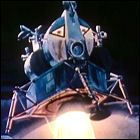 Weeks before an American astronaut first makes it to orbit, NASA unveils the design of the two Apollo spacecraft: a command/service module (large compared to the Mercury capsules Americans have already seen) and a completely un-aerodynamic lunar module whose unique shape, designed solely for landing on the moon, will never need to operate inside an atmosphere. Though further refinements in both designs are still to come, NASA has already decided on the basic shape of its crash lunar exploration program whose goal is to land a man on the moon before
Weeks before an American astronaut first makes it to orbit, NASA unveils the design of the two Apollo spacecraft: a command/service module (large compared to the Mercury capsules Americans have already seen) and a completely un-aerodynamic lunar module whose unique shape, designed solely for landing on the moon, will never need to operate inside an atmosphere. Though further refinements in both designs are still to come, NASA has already decided on the basic shape of its crash lunar exploration program whose goal is to land a man on the moon before 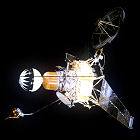 NASA launches the Ranger 3 lunar probe, built by Jet Propulsion Laboratory and intended to go directly to the moon, transmitting pictures of the surface back to Earth until it impacts the lunar surface. This modified Ranger spacecraft design also includes a balsa wood sphere, containing seismic detection experiments, which is intended to be blasted free of the main spacecraft and impact the moon separately. A problem with the Agena second stage booster puts Ranger 3 on the wrong heading with too much acceleration, missing the moon by 22,000 miles. With three straight failures to send a costly probe to the moon, NASA’s future and the future of its lunar exploration program is now under government review.
NASA launches the Ranger 3 lunar probe, built by Jet Propulsion Laboratory and intended to go directly to the moon, transmitting pictures of the surface back to Earth until it impacts the lunar surface. This modified Ranger spacecraft design also includes a balsa wood sphere, containing seismic detection experiments, which is intended to be blasted free of the main spacecraft and impact the moon separately. A problem with the Agena second stage booster puts Ranger 3 on the wrong heading with too much acceleration, missing the moon by 22,000 miles. With three straight failures to send a costly probe to the moon, NASA’s future and the future of its lunar exploration program is now under government review.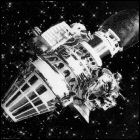 An unmanned Soviet lunar lander, Luna 4, is launched from the USSR’s Baikonur Cosmodrome. Unlike Luna 2, which intentionally crashed into the moon with no attempt to slow its approach, Luna 4 is the first atempt at a vehicle intended to survive its descent to the lunar surface and make observations from the ground. A failed course correction engine burn leaves the 3,000-pound vehicle in a wide, looping orbit around the Earth, unable to reach the moon at all. The Soviet Union, after several more attempts, will eventually achieve the first unmanned soft landing on the surface of the moon three years later.
An unmanned Soviet lunar lander, Luna 4, is launched from the USSR’s Baikonur Cosmodrome. Unlike Luna 2, which intentionally crashed into the moon with no attempt to slow its approach, Luna 4 is the first atempt at a vehicle intended to survive its descent to the lunar surface and make observations from the ground. A failed course correction engine burn leaves the 3,000-pound vehicle in a wide, looping orbit around the Earth, unable to reach the moon at all. The Soviet Union, after several more attempts, will eventually achieve the first unmanned soft landing on the surface of the moon three years later.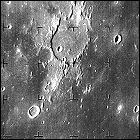 NASA launches the Ranger 7 lunar probe, built by Jet Propulsion Laboratory and intended to go directly to the moon, transmitting pictures of the surface back to Earth until it impacts the lunar surface. Months of building system redundancies into the Ranger spacecraft have made this vehicle more likely to carry out its mission, and it becomes the first of the Ranger probes to reach the moon with its eyes open. Pictures are transmitted back to Earth as Ranger 7 plunges into the lunar surface near the Ocean of Storms, with photo resolution exceeding expectations. One of the ground controllers at JPL breaks open a jar of peanuts during Ranger 7’s final approach to the moon, starting a JPL tradition that lasts to this day.
NASA launches the Ranger 7 lunar probe, built by Jet Propulsion Laboratory and intended to go directly to the moon, transmitting pictures of the surface back to Earth until it impacts the lunar surface. Months of building system redundancies into the Ranger spacecraft have made this vehicle more likely to carry out its mission, and it becomes the first of the Ranger probes to reach the moon with its eyes open. Pictures are transmitted back to Earth as Ranger 7 plunges into the lunar surface near the Ocean of Storms, with photo resolution exceeding expectations. One of the ground controllers at JPL breaks open a jar of peanuts during Ranger 7’s final approach to the moon, starting a JPL tradition that lasts to this day.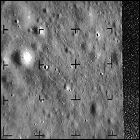 NASA launches the Ranger 8 lunar probe, built by Jet Propulsion Laboratory and intended to go directly to the moon, transmitting pictures of the surface back to Earth until it impacts the lunar surface. Ranger 8 functions flawlessly, sending pictures back to Earth until it slams into the Sea of Tranquility at high speed. Over 7,000 photos are returned, with the last complete picture transmitted prior to impact showing lunar surface features as small as five feet across.
NASA launches the Ranger 8 lunar probe, built by Jet Propulsion Laboratory and intended to go directly to the moon, transmitting pictures of the surface back to Earth until it impacts the lunar surface. Ranger 8 functions flawlessly, sending pictures back to Earth until it slams into the Sea of Tranquility at high speed. Over 7,000 photos are returned, with the last complete picture transmitted prior to impact showing lunar surface features as small as five feet across.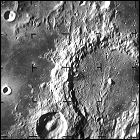 NASA launches the Ranger 9 lunar probe, built by Jet Propulsion Laboratory and intended to go directly to the moon, transmitting pictures of the surface back to Earth until it impacts the lunar surface. Despite NASA scientists’ insistence that the last Ranger probe carry scientific instruments and not just cameras, Ranger 9 is outfitted with cameras only; as a tradeoff, scientists get to nominate its target on the surface, selecting the crater Alphonsus, suspected to be a site of lunar volcanism. Ranger 8 functions flawlessly, sending live video back to Earth until impacting in the crater floor, and for the first time the terminal descent of one of the Ranger probes is broadcast live on TV. This concludes the Ranger program, as NASA now needs to switch its efforts to the unmanned Surveyor lunar landers to find out if the moon’s surface can support the weight of a manned lander. The basic architecture of the Ranger spacecraft is adopted as the heart of the ongoing Mariner planetary space probe series, up to and including the Mariner Jupiter/Saturn ’77 missions (later renamed Voyager) over a decade later.
NASA launches the Ranger 9 lunar probe, built by Jet Propulsion Laboratory and intended to go directly to the moon, transmitting pictures of the surface back to Earth until it impacts the lunar surface. Despite NASA scientists’ insistence that the last Ranger probe carry scientific instruments and not just cameras, Ranger 9 is outfitted with cameras only; as a tradeoff, scientists get to nominate its target on the surface, selecting the crater Alphonsus, suspected to be a site of lunar volcanism. Ranger 8 functions flawlessly, sending live video back to Earth until impacting in the crater floor, and for the first time the terminal descent of one of the Ranger probes is broadcast live on TV. This concludes the Ranger program, as NASA now needs to switch its efforts to the unmanned Surveyor lunar landers to find out if the moon’s surface can support the weight of a manned lander. The basic architecture of the Ranger spacecraft is adopted as the heart of the ongoing Mariner planetary space probe series, up to and including the Mariner Jupiter/Saturn ’77 missions (later renamed Voyager) over a decade later.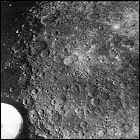 The Soviet Union launches Zond 3, an unmanned spacecraft nearly identical to the failed Mars-bound space probe Zond 2, on a trajectory that will swing past the moon on its way to interplanetary space. It would make its closest flyby to the moon on July 20th, 1965, four years to the day prior to the first manned lunar landing, taking photos of the far side of the moon as it heads into deep space. Zond 3 proceeds on a trajectory toward the orbit of Mars, even though it will be too far away from the planet to study it.
The Soviet Union launches Zond 3, an unmanned spacecraft nearly identical to the failed Mars-bound space probe Zond 2, on a trajectory that will swing past the moon on its way to interplanetary space. It would make its closest flyby to the moon on July 20th, 1965, four years to the day prior to the first manned lunar landing, taking photos of the far side of the moon as it heads into deep space. Zond 3 proceeds on a trajectory toward the orbit of Mars, even though it will be too far away from the planet to study it.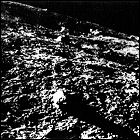 The Soviet Union lands a palpable hit in the space race, claiming the first intact soft-landing of a man-made probe on another body in the solar system.
The Soviet Union lands a palpable hit in the space race, claiming the first intact soft-landing of a man-made probe on another body in the solar system. 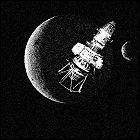 The Soviet Union launches unmanned space probe Luna 10 toward the moon, where it becomes the moon’s first artificial satellite. Luna 10 remains functional for two months, during which a pre-recorded signal from it becomes one of the highlights of the 23rd Congress of the Soviet Communist Party. Luna 10 does not take photos of the moon from orbit, but does find varying concentrations of mass within the lunar surface. This is the last of the original “large” Luna probes, with later orbiters taking on a more compact form, and later large Luna probes containing landers and sample return rockets.
The Soviet Union launches unmanned space probe Luna 10 toward the moon, where it becomes the moon’s first artificial satellite. Luna 10 remains functional for two months, during which a pre-recorded signal from it becomes one of the highlights of the 23rd Congress of the Soviet Communist Party. Luna 10 does not take photos of the moon from orbit, but does find varying concentrations of mass within the lunar surface. This is the last of the original “large” Luna probes, with later orbiters taking on a more compact form, and later large Luna probes containing landers and sample return rockets.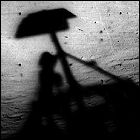 NASA’s first attempt to soft-land an unmanned space probe on another body in the solar system ends with a perfect landing:
NASA’s first attempt to soft-land an unmanned space probe on another body in the solar system ends with a perfect landing: 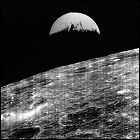 The first of five
The first of five 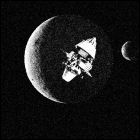 The Soviet Union launches unmanned space probe Luna 11 toward the moon, the first of a new, smaller generation of Luna probes designed to survey the moon from orbit. Unlike its predecessor, Luna 11 is equipped with cameras, and like NASA’s Lunar Orbiter, Luna 11 is tasked with mapping the moon in advance of a presumed attempt to land cosmonauts there. However, an attitude control problem points Luna 11’s cameras away from the moon, unable to transmit useful imagery back to Earth. Luna 11 remains functional in orbit of the moon for six weeks.
The Soviet Union launches unmanned space probe Luna 11 toward the moon, the first of a new, smaller generation of Luna probes designed to survey the moon from orbit. Unlike its predecessor, Luna 11 is equipped with cameras, and like NASA’s Lunar Orbiter, Luna 11 is tasked with mapping the moon in advance of a presumed attempt to land cosmonauts there. However, an attitude control problem points Luna 11’s cameras away from the moon, unable to transmit useful imagery back to Earth. Luna 11 remains functional in orbit of the moon for six weeks.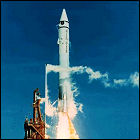 Three days after lifting off from Earth, NASA’s
Three days after lifting off from Earth, NASA’s 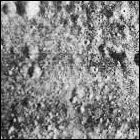 The Soviet Union launches unmanned space probe Luna 12 toward the moon, a near-identical twin of the earlier Luna 11 spacecraft. Luna 12 returns images and observations from lunar orbit for three months until its batteries are exhausted.
The Soviet Union launches unmanned space probe Luna 12 toward the moon, a near-identical twin of the earlier Luna 11 spacecraft. Luna 12 returns images and observations from lunar orbit for three months until its batteries are exhausted.